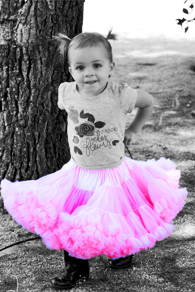 Earlier this month, I asked for your help regarding what YOU do to help your little one navigate more gracefully through those inevitable toddler tantrums. You had some great things to say on the issue! So, I thought I should give you a little update about what I’ve found to work for my daughter (at least it’s working this month).
Earlier this month, I asked for your help regarding what YOU do to help your little one navigate more gracefully through those inevitable toddler tantrums. You had some great things to say on the issue! So, I thought I should give you a little update about what I’ve found to work for my daughter (at least it’s working this month).
I picked up the book Secrets of a Baby Whisperer for Toddlers. (I swore by The Baby Whisperer’s wisdom for helping me get Reagan to nap better… and she hasn’t let me down in her book for toddlers.)
As Reagan started facing the emotional roller coaster that comes with being two, I was completely stumped on how to help her and what to do about it. (I mean really, we can’t all go through life screaming every time we don’t get our way.) Besides, I want her to feel the ups and downs of life, but I just want to help her learn how to control them instead of being controlled BY them.
Someone explained it to me in terms I could really understand: Our emotions are like a wild horse and we are the rider.
As a former equestrian, I spent a majority of my impressionable years on the back of a horse. When I was 14, we got a very spirited Thoroughbred named Missy. Missy was elegant and nervous. She was difficult to ride and was pretty sensitive. In order to ride her effectively, I had to be VERY PATIENT with her. I would need to take my time and let her ease into new situations. My hands had to be so soft touching the reigns that I may as well have used sewing thread instead of leather to steer her. She was so nervous that she would stick her head straight up in the air and flap her lip with a nervous twitch. But, if I was patient enough, I could help her relax. Her head would eventually drop down and her lip would flap relaxed with the rhythm of her stride.
I remember my trainer commenting on my patience with her – that she would have given up or gotten stern with her. I thought then, and I maintain that that type of reaction would have only made matters worse. Remaining calm myself and having self-control was the only way to help Missy do the same.
Our children’s emotions are like a wild horse. We need to teach them how to control those emotions so that they don’t run away from them. The Baby Whisperer in her book on Toddlers talks in Chapter Seven about teaching self-control. She gives tons of great tips and practical advice. The one thing that I’ve been using to help Reagan navigate these wild horse moments is time out… together.
I’ve heard of time out when you stick the kid in their room or crib and then leave them their for a while until they settle down. But Tracy encourages parents to do the time outs WITH the young toddler. For us, it looks like this:
Reagan wants something or otherwise throws an enormous tantrum. (I’ve tried walking away or distracting her with something else first.) If it escalates (and some days my tolerance level is higher than others) then I let her know that we need a time out. (Sometimes she gets it together and behaves nicely with just this remark.) But usually, she doesn’t. I pick her up gently and either whisper that she needs a time out to find self-control, or if I’m annoyed, I don’t say anything yet.
We go to her bedroom. I place her in her crib with her pacifier and blanky. I explain to her that she needs a time out to find self-control. I say that once she finds it, then we can go about our day, but screaming at me is no way to behave. I tell her that I can wait with her as long as she needs. Once she has calmed down, I pick her up and hug her. Sometimes she flies into another fit and sometimes she’s ready to get down and play once again. It is not a science or a formula. I just have to feel it out and be flexible and creative to help her to tame that wild horse.
What works for your kids? Do you have other ideas for navigating the emotional ups and downs of a toddler?



















I love the “get control” time out. Baylor just started preschool a few half days a week and the teacher described the same concept – the timeout is not for punishment, but rather time for the kiddo to regain their composure. I’ve found when I ask her “do you need to have some quiet time in your crib?” the answer is always “yes” and then after a few minutes, she calms down, starts to play and then wants to stay and play because she’s in a better mood. Great advice Joy!
We’re dealing with the same thing right now! I just wrote a blog post about what’s helping us right now. Hope you can get something from it. Good luck!
https://www.dailydoseofdelsignore.com/2011/09/put-your-foot-down.html
Comments are closed.